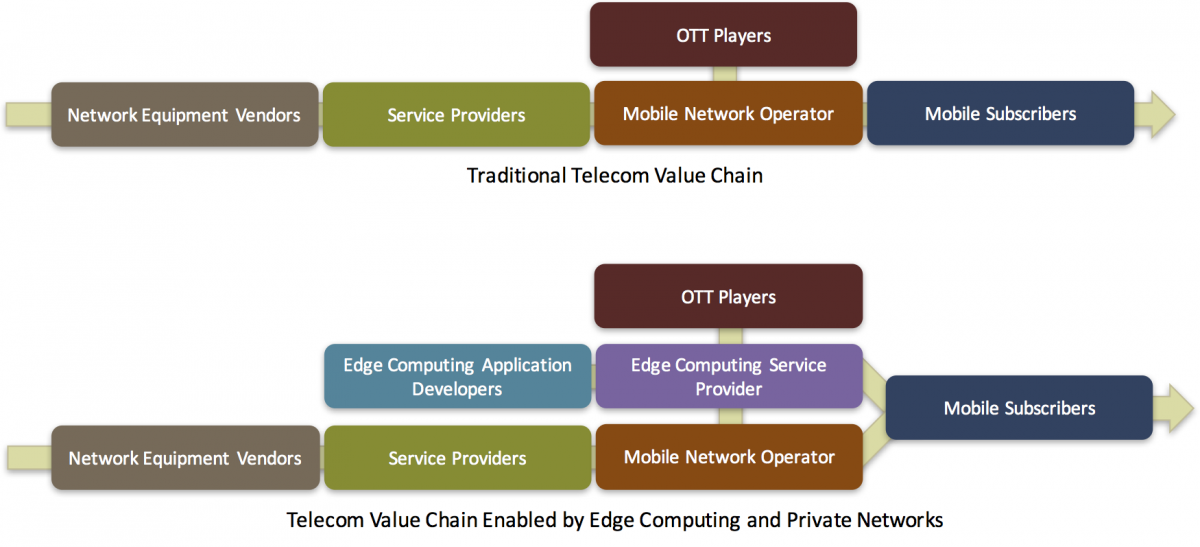Technology, Media, and Telecom

Technology, media, and telecommunications (TMT) are an interconnected sectors which are constantly evolving. TMT companies offers solutions for digital marketing, e-commerce, data management software & app development, cyber security among several others. Telecommunications infrastructure enables international business transactions and data flows, while media content reaches a global audience. The rise of high-speed internet and mobile technology has changed the way media is distributed and consumed, leading to the emergence of streaming services.
Digital connectivity empowering individuals and societies through enhanced rollout of 5G
Telecommunications companies play a vital role in the connectivity that enables communication, data exchange, and access to media content. 5G underpins future mobile innovation and services, building on ongoing deployments and adoption and its adoption is going to reach 17% in 2023, reaching 54% (equivalent to 5.3 billion connections) by 2030. The technology would add approximately USD1 trillion to the global economy in 2030, spreading benefits across all sectors thereby driving the TMT market.
Telecommunications companies provide the infrastructure for high-speed internet and mobile networks, enabling seamless communication and access to media content. Technological advancements such as 5G networks and IoT devices are also revolutionizing communications and creating new opportunities for media content and services. The convergence of technology, media, and telecommunications characterizes the TMT industry, leading to synergies and innovations that benefit consumers and businesses.
Edge computing is fundamental in managing and analyzing the data generated by IoT devices and is one of the most critical trends in the TMT industry. Computing is essential for critical applications like autonomous vehicles and industrial IoT, enhancing performance and data security without compromising. AI and ML optimizes networks, predicts maintenance, and personalizes content and are revolutionizing the TMT industry. Robots are used for the installation and maintenance of 5G infrastructure and Internet of Things (IoT) devices, ensuring network coverage and connectivity.

Digital disruption is transforming the creation, distribution and consumption of television content
The streaming wars continue to intensify with major players like Netflix, Amazon Prime, Disney+, and Apple TV+ investing heavily in original content. Live streaming and user-generated content platforms like Twitch and YouTube have also gained significant ground. Streaming services continue to be a major driver of innovation and competition in the TMT industry. They are constantly evolving to meet consumer demands and adapting to technological advancements.
The internet has revolutionized content distribution with Over-the-top (OTT) services that allow video content to be delivered directly to viewers, bypassing traditional cable and satellite TV providers. OTT services are disrupting traditional broadcast models and ushering in a new era of content consumption with greater flexibility and customization for viewers.
The ecosystem of the Internet of Things (IoT) is expanding rapidly with its various applications such as smart homes, wearable devices, and industrial sensors by increasing efficiency and data-driven decision-making. With increasing number of data breaches and cyber-attacks, it’s crucial to have strong security measures in place. TMC companies are investing heavily in advanced cyber security solutions to safeguard their data, networks, and user privacy.
Cloud computing allows TMT companies to scale their infrastructure and services up or down based on demand. Many TMT companies utilize cloud services to host and deliver streaming content. This is essential for over-the-top (OTT) streaming platforms, live sports events, music streaming, and video-on-demand (VOD) services. In June 2022, Amazon Prime Video collaborated with AMC Networks to offer their content as part of the Prime Video Channels service in India.
Virtual Reality (VR) and Augmented Reality (AR) are used for remote collaboration and communication. VR headsets and experiences offer immersive entertainment options. AR is used to enhance live events televised broadcasts by overlaying digital information, graphics, and effects onto the real world.
Stringent compliances on social media platforms, news aggregators, digital news media, and online curated content providers
The TMT industry is subject to extensive regulations that must be adhered to. These regulations span a range of areas, including net neutrality, content censorship, antitrust, data protection, intellectual property, copyright, and consumer protection. Companies must ensure that they comply with these regulations to avoid the severe consequences of legal action, hefty fines, and damage to their reputation. Compliance with these regulations is an unambiguous requirement, and companies must invest in legal and regulatory teams to stay vigilant and adapt to changes. Failure to comply with these regulations is not an option.
Business expansion by key players is driving the industry’s growth
Telecom giants are expanding their presence and product portfolios through mergers and acquisitions. Telecom players are investing heavily in acquiring the necessary spectrum to offer next-gen services. The telecommunications industry is dominated by several key players, including AT&T, Verizon, NTT, Telefonica, KT Corporation, Reliance Jio, KDDI Corporation, Orange SA, BT Group, Comcast, Apple, Microsoft, Sony, Samsung, Intel, HP, Huawei, Panasonic, Ericsson, Nokia, Cisco, Qualcomm, Juniper, and ZTE.
Technology, Media, and Telecommunications (TMT) industry is evolving rapidly, driven by groundbreaking technologies like 5G, edge computing, AI, and IoT. Our researchers at Intent Market Research can help businesses to fuel innovative products to gain agility, and arrive at scalable, customized solutions in rapid time to value and maximize their revenues.

